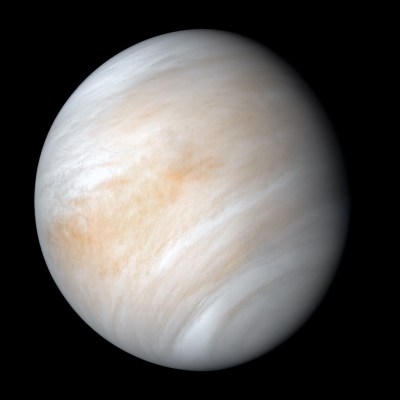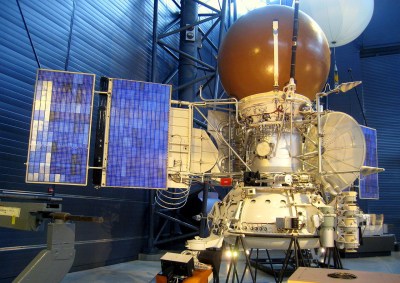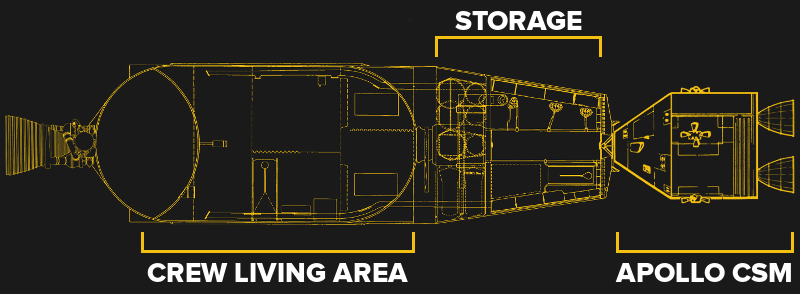By now, you’ve likely heard that scientists have found a potential sign of biological life on Venus. Through a series of radio telescope observations in 2017 and 2019, they were able to confirm the presence of phosphine gas high in the planet’s thick atmosphere. Here on Earth, the only way this gas is produced outside of the laboratory is through microbial processes. The fact that it’s detectable at such high concentrations in the Venusian atmosphere means we either don’t know as much as we thought we did about phosphine, or more tantalizingly, that the spark of life has been found on our nearest planetary neighbor.

To many, the idea that life could survive on Venus is difficult to imagine. While it’s technically the planet most like Earth in terms of size, mass, composition, and proximity to the Sun, the surface of this rocky world is absolutely hellish; with a runaway greenhouse effect producing temperatures in excess of 460 C (840 F). Life, at least as we currently know it, would find no safe haven on the surface of Venus. Even the Soviet Venera landers, sent to the planet in the 1980s, were unable to survive the intense heat and pressure for more than a few hours.
While the surface may largely be outside of our reach, the planet’s exceptionally dense atmosphere is another story entirely. At an altitude of approximately 50 kilometers, conditions inside the Venusian atmosphere are far more forgiving. The atmospheric pressure at this altitude is almost identical to surface-level pressures on Earth, and the average temperature is cool enough that liquid water can form. While the chemical composition of the atmosphere is not breathable by Earthly standards, and the clouds of sulfuric acid aren’t particularly welcoming, it’s certainly not out of the realm of possibility that simple organisms could thrive in this CO2-rich environment. If there really is life on Venus, many speculate it will be found hiding in this relatively benign microcosm high in the clouds.
In short, all the pieces seem to be falling into place. Observations confirm a telltale marker of biological life is in the upper levels of the Venusian atmosphere, and we know from previous studies that this region is arguably one of the most Earth-like environments in the solar system. It’s still far too early to claim we’ve discovered extraterrestrial life, but it’s not hard to see why people are getting so excited.
But this isn’t the first time scientists have turned their gaze towards Earth’s twin. In fact, had things gone differently, NASA might have sent a crew out to Venus after the Apollo program had completed its survey of the Moon. If that mission had launched back in the 1970s, it could have fundamentally reshaped our understanding of the planet; and perhaps even our understanding of humanity’s place in the cosmos.
Just Passing Through
The Apollo program was fantastically expensive, and many believed it would be a waste to simply abandon all that equipment and collected knowledge once the primary mission had been completed. So even before the 1969 Moon landing, NASA had started studying potential future uses for the hardware as part of what they called the Apollo Applications Program. The greatest success of this program was SkyLab, but there were other fascinating ideas proposed that unfortunately never left the drawing board.
Certainly the most outlandish of which was the proposed 1973 Venus flyby mission. Using an Apollo Command and Service Module (CSM) that had been specially modified for long duration spaceflight, and a “wet workshop” crew compartment made out of a spent Saturn V upper stage, three astronauts would have embarked on a year-long journey to our nearest planetary neighbor.
After the Saturn V upper stage had put the vehicle into orbit, the Apollo CSM would have detached and rotated 180 degrees to dock with a pressurized storage compartment that had been installed in place of the Lunar Module. The upper stage’s J-2 engine would then be used to perform the trans-Venus injection burn, and afterword, any remaining propellant would have been vented into space. On the journey away from Earth, astronauts would have moved the tightly packed equipment and supplies from the storage area into the now empty propellant tanks through a special hatch installed at the top. With the J-2 engine now inoperable, the redundant twin engines of the proposed Block IV CSM would be used to perform any course corrections as well as the braking burn when the vehicle returned to Earth.
There would have been no way to slow down at Venus after the four month interplanetary flight. Instead, the vehicle would have made a partial orbit of the planet at an altitude of approximately 5,000 kilometers (3,000 miles) before being slung back towards home. This would have only given the crew a few crucial hours to make their observations and deploy sensing equipment, but it was believed their close proximity to the planet would allow them to do more useful science in that short amount of time than could be accomplished remotely with the technology of the era.
Exploring the Clouds
While the human occupants of this makeshift interplanetary ship wouldn’t have stayed for long, it was expected they would drop off a few robotic probes that would descend into the planet’s atmosphere. These probes would have continued operating for a few days after the initial flyby and communicated directly with the retreating crewed spacecraft. This would have allowed them to pack smaller and less powerful radio transmitters than would otherwise have been required to send their findings directly back to Earth, increasing not only their useful payload capacity but the amount of time they could have operated before their batteries were depleted.

While we can only speculate as to what form these probes would have taken, it’s a safe bet that at least some would have been similar to the balloons carried on the Soviet Vega missions in 1985. Filled with helium and treated with chemicals to help resist the corrosive properties of the Venusian clouds, these probes were designed to reach equilibrium and remain within the 50 km temperate zone to collect as much data as possible before their batteries ran down. The Vega balloons proved to be highly successful, though they only carried rudimentary instrumentation.
Had NASA gone ahead with regular Apollo-Venus missions, these floating probes would likely have become more advanced as technology improved and scientists learned more about the planet. We now know that the lower atmosphere is so thick that probes and spacecraft can easily be floated within this temperate zone. Robotic vehicles, and perhaps eventually even crewed ones, could be designed to “splashdown” in the atmosphere rather than pass through it.
Venusian Airships
Despite the inhospitable surface, there are several compelling reasons to mount crewed expeditions to Venus. For one, it’s the second closest destination in the solar system after the Moon. With transit times as short as four months, a round-trip mission is well within the established limits of human endurance in space. From orbit, humans can conduct more detailed and varied observations and experiments than what’s possible with remotely operated vehicles alone.
But humans are explorers by nature, and eventually astronauts will want to descend into the planet’s atmosphere themselves. In that case, they would experience gravity 90% of what they’re used to on Earth; close enough that muscular and skeletal degradation will no longer be a concern. It’s also notable that the breathable mixture of nitrogen and oxygen that human explorers would need to bring along with them would function as buoyant gas in the planet’s 96.5% CO2 atmosphere, allowing for the possibility of crewed Venusian dirigibles.
The idea of sending crewed inflatable vehicles, and even building a permanent outpost in the clouds, was explored by NASA as recently as 2015. Called the High Altitude Venus Operational Concept (HAVOC), this study proposed a spacecraft architecture that could safely insert human crews into the temperate layers of the Venusian atmosphere, allow them to work there for extended periods of time, and then return them to orbit with an air-launched rocket. Outwardly these craft, some as large as 129 meters in length, would closely resemble large rigid airships of the early 20th century such as the USS Shenandoah and the Hindenburg.
The Next Steps
As exciting as the prospect of a human “Cloud City” on Venus might be, it’ll probably never happen. If recent history is any indication, securing the long-term political backing necessary to fund an undertaking of this magnitude would be all but impossible. It was hard enough getting American astronauts back into orbit on domestic spacecraft, and the agency’s elaborate plans for a return to the Moon seem perpetually years down the road.

Sending a crewed mission into orbit around Venus would be considerably easier and cheaper than establishing an outpost, but it’s still far more likely that the most direct consequence to finding phosphine gas in the planet’s atmosphere is a push for a new generation of robotic missions. Technology has improved dramatically, and building a floating atmospheric probe designed to seek out signs of biological life is no longer the insurmountable challenge it was in the 1970s.
Indeed, the wheels are already in motion. Rocket Lab CEO Peter Beck has already announced his company plans on launching a small probe towards Venus as soon as 2023 that will be designed to dive into the planet’s atmosphere and search for signs of microbial life. The probe will be tiny, owing to the relatively meager payload capacity of the Electron rocket, but it’s a start. Hopefully larger and more elaborate spacecraft won’t be far behind.
While we’ll never see an astronaut take their one small step on the rocky surface of Venus, it’s still a planet that clearly deserves a closer look. Confirming the existence of extraterrestrial life would be one of the greatest scientific discoveries of all time, doubly so if it ends up being on a world so much like our own. Studying the hearty lifeforms that make Venus their home would be as near as we’ll ever get to directly observing Earth’s distant past. Or, if we’re not careful, Earth’s distant future.


No comments:
Post a Comment